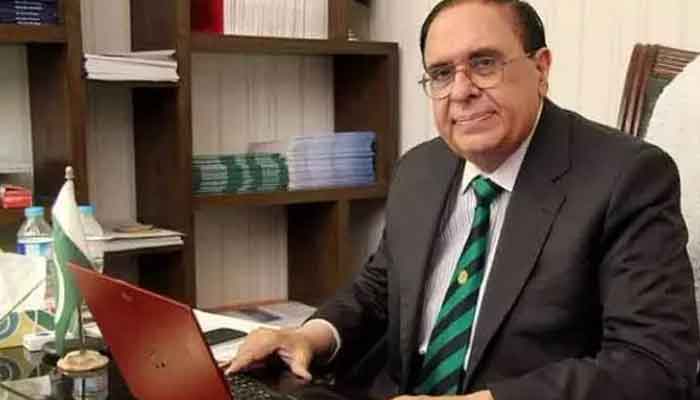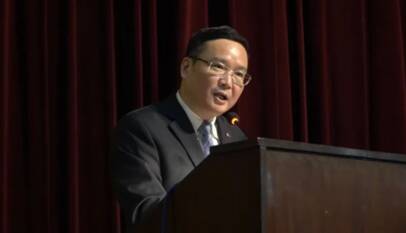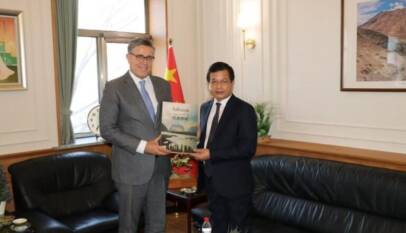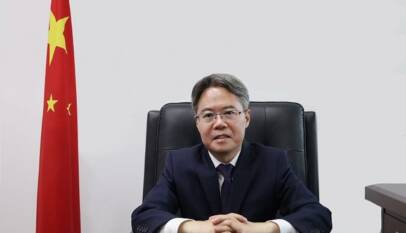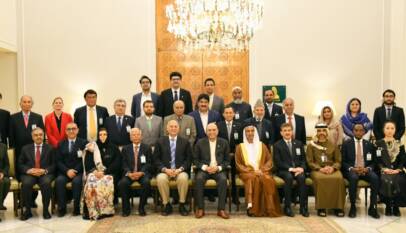Pakistan can benefit from Chinese expertise in many sectors: Dr. Atta-ur-Rahman
Dr. Atta-ur-Rahman, Chairman PM National Task Force on Science and Technology writes that Prime Minister Imran Khan met the Chinese prime minister last week and requested him for a strong collaboration between the Pak University of Engineering and Emerging Technologies being established in land behind the PM House and China’s Tsinghua University and Beijing University. He highlighted that this new university is likely to add to the growing list of excellent academic institutions that are being established in Pakistan in collaboration with China, Austria, Germany, the UK and other countries under his supervision. He added that the Chinese universities will be involved in training our scientists and transferring the latest technologies in areas such as artificial intelligence, bullet train (high-speed train) manufacturing, materials engineering and advanced agriculture. He stressed on to develop the ability to manufacture and export high-tech (high-value) goods like China. He also suggested that Pakistani Government should encourage scientists and engineers working in government institutes to undertake their own private work and consulting services in their spare time.
Prime Minister Imran Khan met the Chinese prime minister last week and requested him for a strong collaboration between the Pak University of Engineering and Emerging Technologies being established in land behind the PM House and China’s Tsinghua University and Beijing University. This new university is likely to add to the growing list of excellent academic institutions that are being established in Pakistan in collaboration with China, Austria, Germany, the UK and other countries under my supervision.
One recent example of my contribution to higher education is the Pak Austrian University of Applied Science and Engineering that has been set up in Haripur, Hazara in collaboration with eight foreign universities, three from Austria and five from China. The Chinese universities will be involved in training our scientists and transferring the latest technologies in areas such as artificial intelligence, bullet train (high-speed train) manufacturing, materials engineering and advanced agriculture.
My collaborations with China were initiated in 1974 and over almost 50 years, dozens of institutional collaborations have been initiated. These include the establishment of joint centres on traditional Chinese medicine, hybrid rice seed production and virology at the University of Karachi, leading to the training of thousands of young students at top Chinese universities – when I was the HEC chairperson – and, more recently, the establishment of new universities in Haripur, Islamabad and Sialkot. Through these contributions, I got the honour of being a recipient of the highest scientific award of China.
The key lesson that we need to learn from China is to develop the ability to manufacture and export high-tech (high-value) goods. For this to happen, we need to create a vibrant ecosystem with high-quality institutions in cutting-edge emerging fields of science and engineering, develop strong links between universities and the industrial sector, and support the development of high-tech industries through access to cheap loans, long-term tax holidays and transfer of technology.
Since 1978, China has recorded a truly remarkable average real annual growth rate of eight to 11 percent of its GDP. China started its huge investments in manpower development in the late 1970s and now sends about 600,000 of its brightest students each year for training its manpower at the PhD and postdoctoral level in advanced technologies to top foreign universities. With the help of this investment, China has become a world leader in innovations and entrepreneurship and in patents application.
It was in 1985 that a central committee of the Chinese Communist Party concerning the reform of the science and technology management system was established in China. This was done to integrate university and research institutes with industrial activities. Through this scheme, major additional funding was provided to research institutes, exclusively directed at the development of high technology products.
The Chinese government encouraged scientists and engineers working in government institutes to undertake their own private work and consulting services in their spare time. This made available a huge number of highly qualified scientific manpower to Chinese industry and greatly helped in the manufacture and export of high technology products. Chinese research institutes were encouraged to establish their companies, either on their own or in partnership with the local industry.
As a result, the Chinese Academy of Sciences, a public-sector institute, established a large number of spin-off enterprises in the 1990s which led to a huge increase in the export of Chinese engineering goods and other items. This initiative was supported by the Torch Programme started in 1988 that provided massive funds to such enterprises. Scientists working in institutes were also encouraged to start their companies with government funding.
Another important step taken by China was in 1992 under the leadership of Deng Xiaoping. Special efforts were initiated to attract foreign direct investment (FDI) into China with a focus on acquisition and absorption of advanced technologies. This involved two key moves. First, in 1995, there was the ‘decision on accelerating scientific and technology progress’ which emphasised the improvement of ‘indigenous technology capability’.
Then, in 1999, there was the ‘decision on strengthening technological innovation and developing high-technology and realising industrialisation’ which introduced a series of measures to encourage the development of high-tech industries. These included: (a) tax breaks to private enterprises investing in research and development; (b) tax exemption for all income derived from the transfer or development of new technologies; (c) a reduced six percent value-added tax rate for software products developed and produced in China; (d) complete VAT exemption and subsidised credit for high-tech exports, and (e) the listing of new high-technology companies on the Shanghai and Shenzhen stock exchanges.
These carefully crafted policies laid the foundations for the subsequent five-year plans in which the government continued to emphasise the improvement of research and development capabilities and the development of its indigenous technology. The government’s R&D policy was always directed at building an innovation- and knowledge-based economy by nurturing indigenous innovation capability; developing an enterprise-centred technology innovation system and promoting the innovation capabilities of Chinese institutions. These policies contributed to the development of technology-intensive industries, and increasing the export of high-tech products. High technology zones were then set up with a focus on specialised technologies.
Pakistan can learn much from these policies and our planning ministry needs to emulate the Chinese example in its efforts to uplift the economy. Roads and bridges alone will not lead to the development of a strong knowledge-based economy. We need to unleash the creative potential of our young people through investments in education, science, technology, innovation and entrepreneurship.
Chinese Ambassador highlights significance of Third Plenary Session for China-Pakistan cooperation
The Third Plenary Session of the 20th Central Committee of the Communist Party of China ha…



